Infrared and the Leica Monchrom with a Super Elmar 21 ASPH by Dierk Topp
Hi Steve,
in your Leica M Monochrom Review part 2.5 you posted some infrared images. “Infrared photography is something I have always been interested in but never really tried it when shooting film.” This is exactly what I experienced during my analog times (since about 50 years 🙂 )
I did some tests with the Nikon D70 and the Hoya R72 filter in 2005, but the focus problem with my amateur zooms at that time where to big.
With the Leica M Monochrome I did some tests with this old filter, taped on the lens (it had 72mm diameter) and the results where promising, but again the problem with the focus. The pictures where not really sharp. My Zeiss C-Biogon 21mm is my only lens with the old-fashioned IR focus mark, all the Leica lenses don’t have this any more:(
In the Leica forum I got the answer: the IR focus lies between the open and the one stop down aperture on the DOF scale of the lens (if you have a better explanation, please correct me!). That means on my Leica Super-Elmar 21mm/3.4 the IR focus point is between the 3.4 and the 5.6 mark on the DOF ring. That is at least, what I used with very good results.
After I got a filter Heliopan R715 in the 46mm mount for the 21mm Super-Elmar and the 35mm Summilux I started with IR — and could not stop till now! 🙂
I am fascinated of the mystic touch of the images. B&W white is great for me, that is, why I invested in the Leica M Monochrom, but infrared is (for me) THE B&W for landscapes. Blue sky and some clouds make the typical IR images and look, but some of the images are made in the shadow of the trees and show this mystic look even more.
I used f/8 for most of the images and about 1/2 second at base ISO 320 at bright sun and of course a tripod. Using the tripod the step for making panorama images is obvious. Looking at the scene I often do some more shots left and right and end up with a panorama image most of the time. For the stitching of the images I use ICE from MS, it is free and very fast. For the images in this post I used the Leica Super-Elmar-M 21mm/3.4 ASPH with the filter R715, I mentioned above.
The post processing is done with Adobe LR4.2 and on some of the images I used Nik SIlver Efex2 after the LR4.
There is not too much more to say about it.
Here are some of my pictures:
I hope, you will enjoy them. Thanks for looking.
You may find more on my flickr IR album
dierk

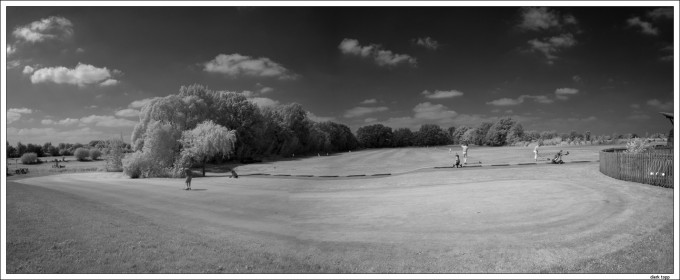

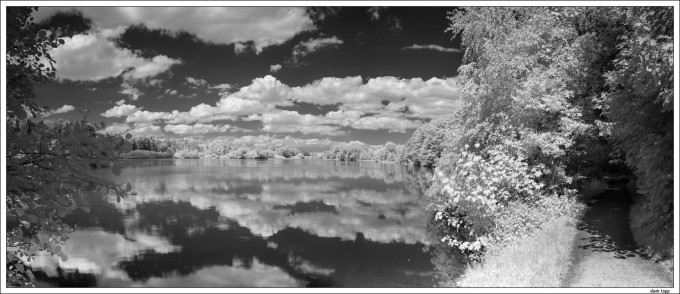
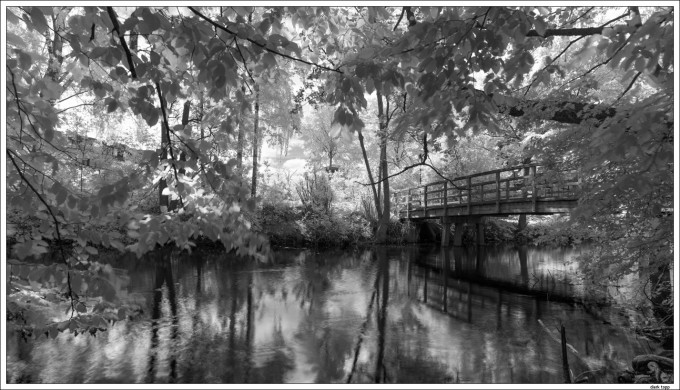
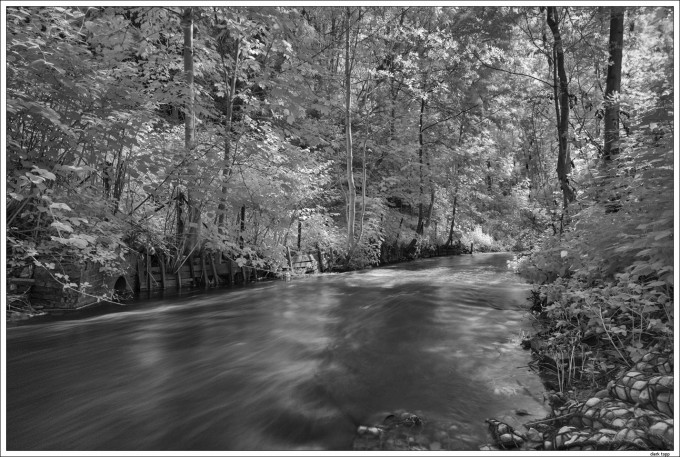
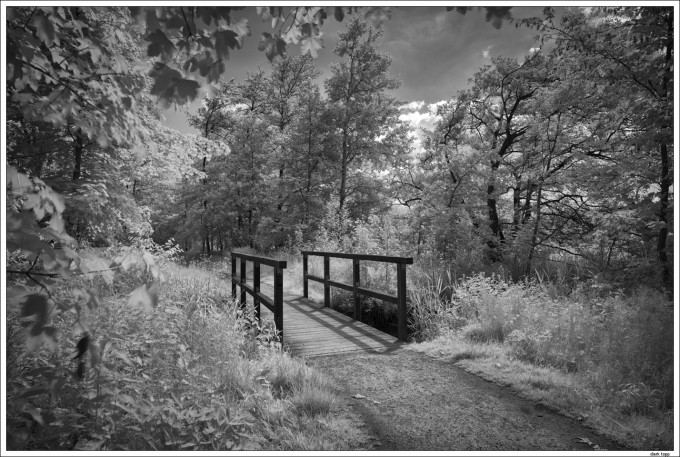
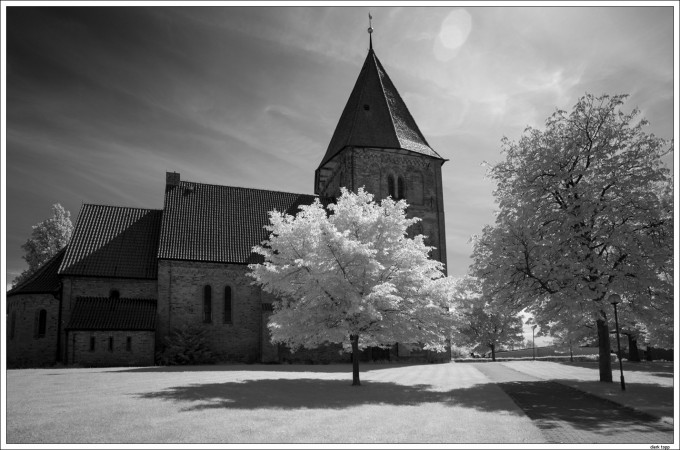
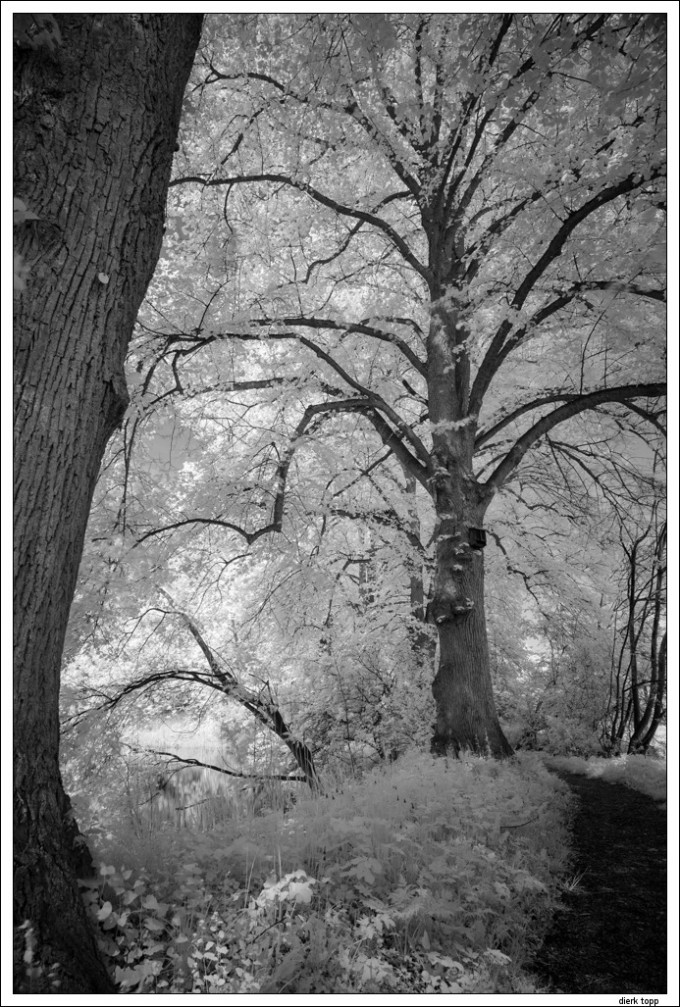
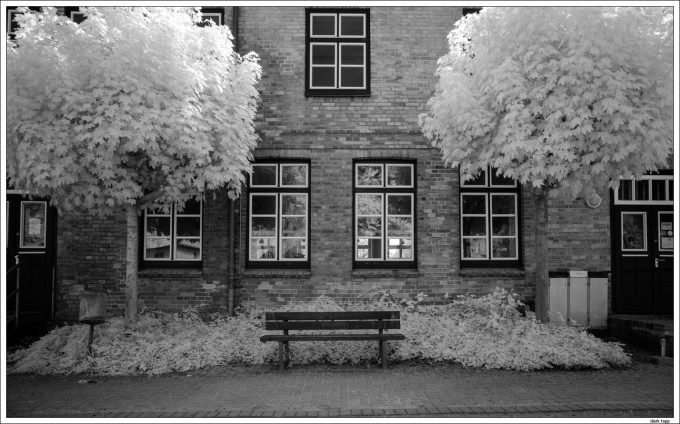
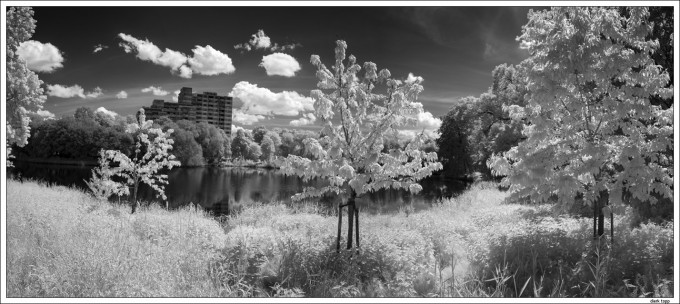
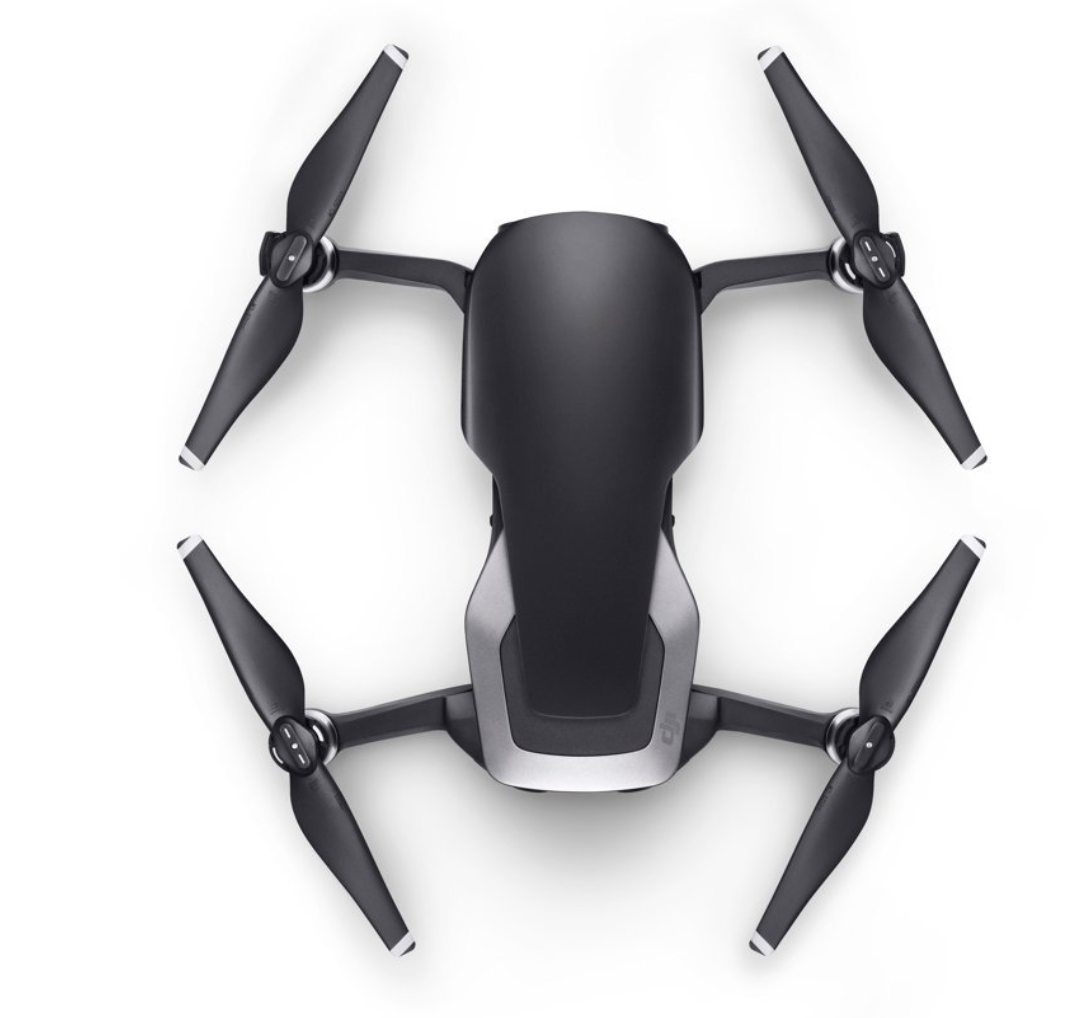

Hi Dierk,
Thank you for sharing your photos and experiences with us. I am inexperienced with digital photography, as proven by comparing JPEGs from my iPhone 6S and DNGs from my M10 and 1980’s era lenses. Nevertheless, I would like to offer some technical conjectures which may clarify things, but in no way invalidate your art.
I think that using apochromatic lenses may be a bad match for infrared photography. I believe that the difference between an apochromat and an achromat is that, for visible light, in a plot of 1/wavelength versus the deviation of maximum focus from the focal plane, the plot crosses zero three times. For the achromat, it crosses twice. Roughly speaking, by this criteria, one might expect a flatter field and less chromatic aberration. I learned this in the 1970’s. Please correct me if I am wrong.
Outside of the visible range, “all bets are off” so to speak, and the distance of maximum focus for apochromats will tend to rapidly deviate from the film plane. (If you have ever done mathematical curve fitting, for example, a spline fit, you may have experienced the function going crazy outside of the region of interest, in order to get the best fit inside the region of interest.) Unfortunately, infrared light lies at the lower edge of the visible range and the plane of maximum focus may be more severely shifted away from the film or sensor plane.
Naturally, one would want to examine plots of 1/wavelength versus deviation from the nominal focal plane for (longer) infrared wavelengths on a lens by lens basis to see if this effect is significant or not. Perhaps with the aid of this information, it would be possible to develop some sort of focus compensation for each lens.
The second issue I would like to raise is the fact that, I assume, that the sensitivity of the sensor in the MM is panchromatic, by this I mean concentrated to the visible region. So, placing a filter over the lens may block much of the visible and pass the infrared, but the sensor may not record the infrared. Under normal circumstances, you would expect a panchromatic sensor to limit IR and UV since these will degrade the image.
I have not checked the sensitivity curve of the MM sensor or the 1/wavelength versus focal plane performance of the apochromatic lens you are using in the passed band of the filter you are using. So, there could easily be something or some things that I have missed. If anyone reading these comments has corrections or can supply additional information, please fire away. It helps to learn something.
nice shots.. greenery nature becomes like my grey hair
Awesome… so beautiful.
Inspiring shots, stirred my interest to go out and try it with my Leica M.
it will be very interesting, how the new sensor of the new Leica M handles IR! The difference is, it is a color sensor.
Dierk,
Nice look, for sure.
I have one humble suggestion: Some of the shots are a bit concentrated in the mid-tones, which makes them a bit, er, dense to the eyes. A gentle Curves edit (or the LR equivalent) could roll some of the mids up a bit.
The very last shot is a bit lighter, and more eye-friendly (imho).
But I see the appeal of the infrared; hope you keep at it! Cheers.
Thanks Peter,
I am not sure, if get it right. On my new calibrated monitor I try to adjust the contrast with bright detailed whites and not to dark shadows. In Nik Silver Efex I use UPOINT to do some additional correction on special parts of the image.
I sent some 1:1 crops of two images to Steve and asked him to ad them to the pictures above, if it is possible.
very nice work, different to what most can achieve. Thanks for sharing this.
thanks to all of you and for your encouraging comments, thanks very much!
Some of the best B&W images I have seen so far in this forum. Magical would be the word for my favorite in this series: Image #4. It makes me want to enter this world.
Great work!
Impressive images! Am staring at the them and their fine details.
They seem to be previews of the after world.
Great shots!
beautiful images and nice article.
FWIW I used to shoot a lot of Kodak Infra Red Film back in the day and successfully used lenses which didn’t have the infra red markings by stopping the lens down right down, so f16+
thanks, Dan.
I tried f/11 and f/16, but the images where not sharp enough. And below f/8 you will get diffraction and loose IQ. With the described method the results are very promising, as you see.
Interesting shoots. I used to shoot with camera on tripod, focusing it normally with MF, THEN adding the filter – try this way next time…
Beautiful work but how do you know what you are getting? Can you see it in live view or do you just have to know?
I would guess you look through the viewfinder..
thanks, Dougbm
the Leica M Monochrom is a range finder camera and you look through the finder for the composition. No Live View on the MM!
It is like shooting B&W, you have to know and imagine, what you will get with your PP tools, like in the analog days.
Excellent!
stunning!
IR is really nice but the “Wood effect” (white foliage) will soon get boring. If you want to shoot the same type of sceneries but foliage looking more normal you might try an orange filter added with a circular polariser.
you may be right.
any “effect” will be boring soon (like fish eye, extreme HDR effects, Polaroid framing….) if it is used as an effect. But like B&W infrared can be an effect or a special tool to show our world in a “special” light and view. I don’t know jet, if it is only an effect for me or if it will be a different way to show the surrounding nature. With the M Monochrom I see the world in B&W, with the IR filter I started seeing it in B&W IR 🙂
Thanks for looking and for all your comments.
Hi Otto,
I have the Monochrom, and use the Orange (B+W) filter always, haven’t tried a circular polariser yet. I prefer using this filter as, I believe, it produces a similar effect as when developing and printing in the darkroom. I prefer to use it as it gives a dependable result, therefore I have to spend less time in my virtual darkroom staring at the screen!
I was thinking about this “effect” problem.
It might not be clear to everybody:
the Leica M Monochrom is a pure B&W camera with a special sensor without Bayer filter. For more info please read the reviews from Steve here on this site. It is not comparable with any other camera shooting in B&W mode!
For shooting real B&W (analog or the M Monochrome) we all know or remember, that we always have to use filters. If you read Ansel Adams books, you will notice, that he had many different filters for any desired B&W-gray tones. I use an orange filter for normal landscape and sometimes a red filter. Using these filters is not for any simple effect, it is necessary for most landscape shots.
Spectacular photos, thanks.
These are great images!! I wish that someone would make a BW sensor that could do IR and VL and then in post (a la HDR style) merge the exposures.
really lovely images Dierk, congratulations!